John May en su blog The Generalist traza este esbozo del actor:
This is an article I wrote that was published in Issue 9 of The Face magazine [ January 1981]. More on this important magazine to come.
THE RIGHT PROFILE
Montgomery Clift
(Oct 17, 1920- July 23, 1966)
‘That’s….Montgomery Clift, Honey!’
– The Clash
He was the first. A bisexual intense, isolated loner. The first of a completely new breed of film actors to seem obsessed. He was disturbing, a chameleon of the emotions. An overnight sensation, he became the most powerful actor in Hollywood yet remained a total enigma.
If he had died young he would have been a huge cult figure; instead he became, in the words of one observer, "the slowest suicide in show business."
He influenced Brando and Dean, de Niro, Pacino and a hundred other young bucks yet he has since been erased from the public memory. Now The Clash sing about him and two major movies are planned on his life. So who was Montgomery Clift?
Edward Montgomery and Roberta Clift were twins, born to Bill, a Southern gentleman and born salesman and Ethel, an unstable woman who was to dominate Monty's w hole existence. A deeply sensitive child, he spent his early life travelling from one exotic location to another as a result of his parents' disintegrating marriage but was always surrounded by high culture and the things that money can buy.

Clift became fascinated with this idea and long preparation, the accumulation of subtle details, was to characterise every part he played.
Offstage his life was an emotional minefield. His mother was smothering him and, when he did make the break from her, it was only to take up with two mother substitutes: Mira Rostova, who became his acting coach, and Libby Holman, a rich society queen with two dead husbands behind her. But by the time he was 19 Monty had realised he was primarily gay —a career killer at that time—and the fact that he was forced to lie and compromise his own sexuality set up dark internal tensions.
He began pulling an increasing number of "pranks", such as hanging by his fingertips from a window ledge 13 stories up and he developed a growing fascination with drugs. Longtime friend Kevin McCarthy, later to star in the original Invasion Of The Bodysnatchers, tells how he used to accompany Clift to Powders, a big drug store on Madison Avenue, where Monty would engage in serious analytical discussions with the pharmacist on the merits of downers.
The first of many serious illnesses - crippling dysentry contracted on a Mexican holiday - prevented him seeing active service and he spent the war playing soldiers on Broadway. In 1945 he got his first starring role as a fighter discharged from an Army hospital for mental cases in Foxes and he became a matinee idol.
Soon the Hollywood offers began rolling in. Monty flew to California but told the moguls straight that his artistic conscience would not allow him to sign away control of his career. There was a part of him that simply didn't care and this gave him negotiating power.
His Broadway acting got more daring, more innovative and the film offers got better. Finally, in the summer of 1946, he accepted Howard Hawks' deal to play opposite John Wayne in a tough western, Red River, shot on location in Rain Valley, Arizona.
Hawks, who discovered and made Lauren Bacall and Carole Lombard, admired Clift but couldn't shape him. Wayne thought Clift an "'arrogant little bastard". Yet all agreed his performance was powerful and Clift knew the implications. He later said: "I watched myself in Red River and I knew I was going to be famous, so I decided I would get drunk anonymously one last time."
In fact. Red River was delayed in release for one and a half years as Howard Hughes sued, claiming Hawks had stolen the climactic scene from his infamous picture The Outlaw. 
In the meantime Clift had made The Search for Fred Zinnemann, a post-holocaust refugee drama in which he came across as a hero with a conscience, vulnerable, realistic, disillusioned.
When this powerful image hit the screens, Clift became a star. Bobby soxers - that first postwar manifestation of teen fervour - worshipped him for his aura of sexless romance. With that single film, he suddenly had more power in Hollywood than even Clark Gable and the moguls needed him badly.
It was the time of the Actor's Studio, the Method, of strange new masculine images and Monty went partway in search of this new macho, discarding his breeding, good manners, cultured airs and straight suits in favour of being beat. He lived in a shabby hotel, was awkward and Bohemian, wore t-shirts and blue jeans and walked with a sexual swagger.
He met Brando around this time. Like Clift, Brando was born in Omaha but there the resemblance ended. Four years his junior, Brando was a muscular hothead who played bongos, rode bikes, kept a racoon in his apartment and was defiantly AC-DC. Brando may have accused Clift of having "a Mixmaster up his ass" but, to their mutual embarassment, they were both heavily influenced by each other.
Elizabeth Taylor was another seminal figure in Monty's life. At the age of 17, she played a wealthy society girl for whom Clift killed his pregnant girlfriend (Shelley Winters) in A Place In The Sun, which was to transform him from a teenage idol to the biggest young film star bar none. Their love scenes, shot in intimate close-up with a six-inch lens, were startling at the time and captured their deep feeling for each other, which extended off-screen. When Taylor discovered Monty was gay their romance ended but they remained friends for life.
An amazing picture of Clift shot by Stanley Kubrick. This and several other pics here from the brilliant site If Charlie Parker Was a Gunslinger, There'd Be a Whole Lot of Dead Copycats
Supremely successful, Clift was emotionally screwed. He began seeing a psychiatrist and had a legendary 14 foot long medicine cabinet installed in his home, which he stocked with pills of all colours of the rainbow. For some two years he turned down every film offer and spent his time between nights of high society living with the likes of Garbo, Chaplin and Aldous Huxley, and nights of slobbish dementia with rough trade picked up off the Hollywood streets. For the record, Clift had a tiny penis, which led Kenneth Anger to nickname him "Princess Tiny Meat" in the unexpurgated version of his book Hollywood Babylon.
He began work again with Hitchcock, in the summer of 1952, playing a priest in I Confess and then followed this with the peak film of his career. From Here To Eternity, based on the powerful novel by James Jones. He played Prewitt, a boxer and bugler, so Clift threw himself into mammoth preparations, working out with pros in the gym and taking bugle lessons to get mouth and throat movements right. Later Deborah Kerr recalled this detailed obsessiveness: "He spent two days figuring out how to say "Who's that?'"
Frank Sinatra played Maggio in the film and Monty worshipped him. They would go off with James Jones and drink like there was no tomorrow. The press agent on the film recalls: "They were a motley trio. Jones looked like a nightclub bouncer with his thick neck and broken face. And there's this edgy cocky little wop Sinatra always spoiling for a fight, and then Monty who managed to radiate class and high standards even when pissing in the gutter."
Clift's intensity affected everyone on the set, stimulating them to raise their standards, and it soon became clear that the film would be a big smash. Yet the nightly binges began affecting Clift and, for the first time, alcohol began to interfere with his work. Filming over, the friendship with Sinatra was not to survive. One night Monty came on sexually with a guy at a party in Bel Air and Sinatra had his bodyguards throw him out on the street and he never spoke to him again.
Eternity established that Clift was in a league of his own but he retreated from his fame into aberrant behaviour. He became prone to a mental state termed "hebephrenic schizophrenia", a reversion to the childhood state, characterised by crawling around on all fours and eating food with his hands. During this period he turned down 163 movie offers including On The Waterfront, East Of Eden and Cat On A Hot Tin Roof, which established Paul Newman, who was described as the new Clift.
James Dean was one of many young actors w ho idolised Clift. He obtained his unlisted phone number and would call him up just hear the sound of his voice. For his part Monty thought Dean was weird but when he heard of his car smash it shook him. He later said: "Dean's death had a profound effect on me. The instant I heard about it I vomited, I don't know why." This was an eerie statement as events turned out.

Then, midway through the production on May 12, Clift was at one of Taylor's dinner parties in a house on top of one of those winding Los Angeles canyons. On the way home he missed a bend and crumpled his car like an accordion around a telegraph pole. When he was finally cleared from the wreckage his body was found to be virtually unharmed but his face was a disaster area. His head was swollen as wide as his shoulders, he had severe concussion, his jaw was broken in four places, his nose in two, his cheekbones were cracked and his front teeth were missing.
After hospitalisation the doctors wired his jaws together and he somehow finished the film. He took amphetamines, downers, alcohol, anything to dull the pain. He sweated so much with the effort that he had to change his shirt eight times a day. When the movie came out a ghoulish public flocked to see if they could notice which bits were shot before and after the accident. Astonishingly Clift finished the whole film before he would dare look in a mirror. He believed his career as an actor was over.
Despite the fact that the left side of his face was now paralysed he managed to keep working. The following year he played opposite Brando in The Young Lions, portraying a character named Noah which he based on a picture of Kafka taken the year of his death.
During shooting Brando lived on a diet of amphetamines and seconal while Clift was never seen without his hip flask containing a lethal mixture of bourbon, crushed Demerol and fruit juice. Brando tried to get him to enlist with Alcoholics Anonymous. He told him: "In a way I hate you. I always hated you because I want to be better than you, but you're better than me - you're my touchstone, my challenge, and I want you and me to go on challenging each other . . . and I thought you would until you started this foolishness."
Clift did not or would not respond. In his private life he became a "superchild", constantly causing scenes and in constant need of attention. In restaurants he would throw food around and was fond of greeting waiters by saying "Hello, fuckface". Guests at his apartment like Arthur Miller, Norman Mailer and Truman Capote stood it all with sadness.
When Marilyn Monroe met him she found a kindred spirit. They starred together, along with Clark Gable, in The Misfits in 1960. By this time Monroe was so addicted to pills she could hardly function but she could still say of Clift: "He's the only person I know who's in worse shape than I am".

During filming Monty was hit accidentally in the eyes and developed cataracts as a result. In constant pain, suffering from deep fatigue and disturbing depressions, he finally-finished the film only to find himself embroiled in a lawsuit with Universal, who blamed him for the picture being over-budget.
After this shattering experience no work was offered to him for four years. He was uninsurable, sick and desperate. One show business writer who met him wrote: "I saw him in 1964; his face had been altered by the terrible car crash he endured in 1956, his once lithe body was rigid, his movements constricted. And the face was a mask; the eyes were dull. He could hardly walk. A friend led him by the elbow. His hand trembled. He stumbled slightly as he moved along. He seemed as if he were in a trance, as if he were no longer with us, as if his overwhelming personal isolation was irremediable. And I remember thinking: he's a dead man."
By the end of his life Clift, one of the great screen actors of all time, was being wheeled out as a curiosity at Andy Warhol parties. He was eating nothing but raw meat and canned baby food. After enduring enormous pain for ten years, he finally died of a heart attack on July 22, 1966.
Hedda Hopper, the powerful Hollywood columnist, once asked him: "In one sentence, what is the story of your life."
Clift replied: "I've been knifed."
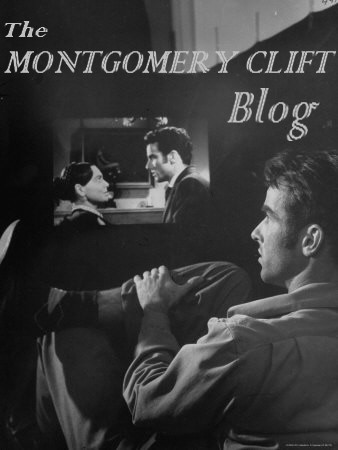












.-+albornoz+(4)+BLOG.jpg)
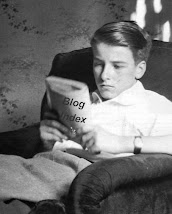
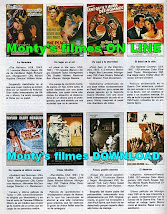


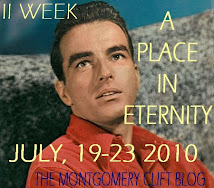











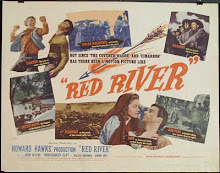
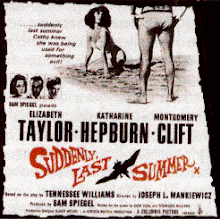



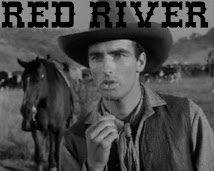
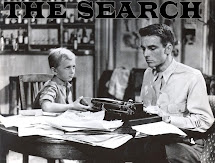

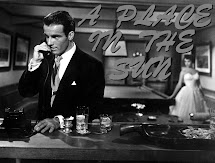2.jpg)
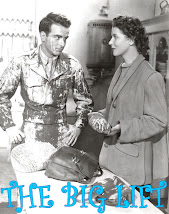.jpg)
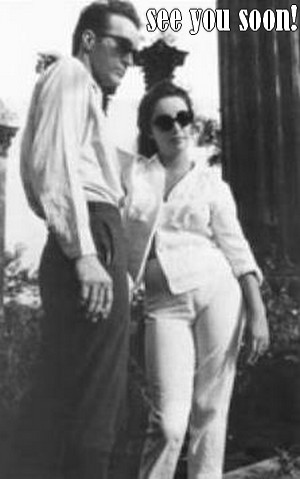

.jpg)


No hay comentarios:
Publicar un comentario